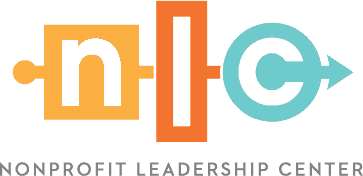As nonprofit leaders, we need all the help we can get raising resources for our organizations. Here are 10 ways to engage your board in fundraising.
10. Know what you want and need from your board members.
Before you can engage board members to help you fundraise, they need to understand what your organization needs. Your board must clearly see your vision and where they fit in advancing it.
9. Recruit with a plan and have clear expectations.
Ongoing board member recruitment is one of your organization’s most strategic and important jobs in partnership with the existing board. Share your dreams for the organization, the projects that will get you closer to turning your vision into a reality, and what is expected of prospective board members.
8. Understand the strengths and interests of each of your board members.
It takes time, but if you get to know your board members well, you will understand what moves them and what their interests are. Spend time with your board and then match your needs to their interests. You will get much better results than throwing spaghetti on the wall and seeing what sticks.
7. Be clear about what fundraising actually means.
Fundraising is much more than asking others for money. The process of fundraising begins with establishing a personal, emotional connection with your organization’s mission. From there, the process can be as simple as telling a story about something important your organization has done. Encourage your board by explaining the many opportunities that comprise fundraising so it isn’t so scary after all.
6. Keep fundraising front and center at every board meeting.
At every board meeting, find a different way to emphasize fundraising. Highlight the successes of individual board members. Remind them about how crucial their involvement is to the ongoing success of your organization. Never let them forget their development responsibilities, and give them a sense of urgency and excitement about making things happen.
5. Create opportunities for each board member to experience the mission personally.
Regardless of your mission, require each board member to participate in or observe your mission in action. Establishing a personal connection with the mission is the best way for each board member to speak to others about your work and make the case for support.
4. Teach your trustees how to tell your story, and make them practice regularly.
Learning to tell personal stories is the most powerful way a reluctant board member can begin to participate in fundraising for your organization. It is also a powerful way for the trustee to experience success and positive feedback.
3. Start slow and build to more challenging projects.
What are some small ways a board member can begin to engage in fund development for your organization? Initial activities include writing thank-you notes, making calls to thank donors and/or hosting an appreciation event. As they get more involved, they could provide tours of your organization, speak at local events and/or recruit other board members. Deeper engagement would be soliciting for auction items, obtaining a corporate sponsorship from their employer, holding a 50/50 raffle at work or at a party at home, asking friends and acquaintances for donations, asking for a matching gift, following up by phone on solicitation asks, and/or making an introduction for an ask. The highest level is direct solicitation for donations at higher and higher levels.
2. Don’t wait for your board to initiate action.
As the CEO, you are your board’s coach. Take the lead in encouraging, teaching and pushing with passion toward more and more trustee involvement with fundraising. Your passion for your organization must be infectious enough to break through to the most reluctant member.
1. Thank each trustee warmly, profusely and genuinely.
Your frequent and genuine appreciation for the efforts of your trustees will result in more engagement and more willingness on the part of your board to take more risks and get out of their comfort zone more often.
Dedicate yourself to this effort and you will no doubt see increased involvement in all areas from your board of directors.
Get Your Certificate in Board Governance
Ready to help your board take its leadership to the next level? Join us for an upcoming Nonprofit Board Rock Star Certificate Series. During this interactive program, over two evenings, you will learn how to:
- Identify, recruit, orient and even release board members
- Define board roles and responsibilities
- Motivate board members and keep them accountable
- Avoid conflicts of interest
- Define an effective board-staff partnership
- Determine the board’s role in financial oversight and fundraising
- Plan and run a successful board meeting
- Develop your nonprofit’s financial statements
- Budget and manage cash flow
- Complete audits and IRS filings
In addition to the above, you’ll build an invaluable network of nonprofit leaders you can consult at any time.

